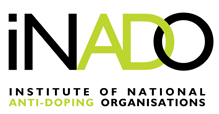21 Jun 2024
CAS 2024/A/10291 US Anti-Doping Agency (USADA) vs. James ‘Michael’ Brinegar
On 26 December 2023 the New Era Arbitration concluded that the swimmer James Michael Brinegar had not committed an anti-doping rule violation based on the abnormal blood values in his ABP reported by the United States Anti-Doping Agency (USADA).
Hereafter USADA appealed the New Era Decision with the Court of Arbitration for Sport (CAS).
In this case, three samples collected from the Athlete between July 20, 2022 and September 27, 2022 showed values consistent with blood doping, specifically the use of ESAs, as confirmed by unanimous expert evaluation of the Athlete's blood profile in early 2023.
The Athlete's case was heard to ensure resolution in advance of team selection decisions related to the upcoming Paris Olympic Games. Because a decision was needed before team selection decisions were made, the CAS panel issued an operative award, which is an abbreviated document that only conveys the panel’s ruling.
The reasoned decision will be made publicly available once it is rendered. The Court of Arbitration for Sport decides on 21 June 2024 that:
1.) The appeal filed by US Anti-Doping Agency (USADA) on 9 January 2024 against the decision issued on 26 December 2023 by New Era Arbitration (Case No 2023082801) is partially upheld, as set out in paragraphs (3)-(6) below.
2.) The said decision issued on 26 December 2023 is set aside.
3. James ‘Michael’ Brinegar is found to have committed an Anti-Doping Rule Violation under Article 2.2. of the World Anti-Doping Code.
4.) James ‘Michael’ Brinegar is sanctioned with a period of Ineligibility (within the meaning of the World Anti-Doping Code) of four (4) years, commencing on the date of this decision.
5.) Credit is to be given for the period during which James ‘Michael’ Brinegar has already been provisionally suspended, from 18 August 2023 until 27 November 2023.
6.) James ‘Michael’ Brinegar’s competition results in the period from 20 July 2022 to 31 December 2022 are disqualified, with all resulting consequences, including forfeiture of any medals, titles, ranking points and prizes (all within the meaning of the World Anti-Doping Code).
7.) The costs of the arbitration, to be determined and served to the Parties by the CAS Court Office, shall be borne by James ‘Michael’ Brinegar.
8.) Each party shall bear its own costs and other expenses incurred in connection with this arbitration.
9.) All other motions or prayers for relief are dismissed.
